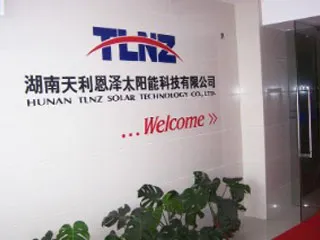
Chinese cell manufacturer validates Natcore’s antireflective coating
Natcore Technology’s antireflective coating technology was independently validated by Chinese solar cell manufacturer, Hunan TLNZ Solar Technology. Natcore researchers in Ohio prepared and sent numerous silicon wafers with the company’s antireflection coating to Hunan, who was selected by the Chinese government to complete the cell finishing and conduct testing.
All the wafers were coated with Natcore’s liquid based deposition technology and were examined for composition and quality by Hunan, who then added metal front and back contacts to the cells and proceeded to test their efficiency. Per Hunan, cell efficiencies reached as high as 15 per cent during the initial testing for the AR coating and the solar cell manufacturer noted that the standard deviation of efficiencies for all the cells was within the normal industry accepted limit.
Additionally, in its testing, Hunan distinguished the process steps that needed to be included in a commercial production system, which should allow for the cells that use Natcore’s AR technology to reach or exceed 17 per cent efficiency in production on a regular basis. Given this result, Natcore China was given the go ahead to finalize the creation of a beta test system.
"This is a major step on the way from the lab to the marketplace," says Natcore president and CEO Chuck Provini. "Just as we anticipated, our efficiencies will equal or exceed efficiencies from cells produced using conventional means. But we're doing so at significantly lower cost—and without using high-temperature vacuum furnaces, toxic silane or huge amounts of silicon, and without the environmental damage created by the old chemical vapor deposition method. We're replacing the CVD method with our LPD wet chemistry process. And we're making solar power cost- competitive with conventional power."








![Cross Domain [Manu + SBR + ABF + ABR + FMCG + HBR + ]](https://cmg-qa.s3.ap-southeast-1.amazonaws.com/s3fs-public/styles/exclusive_featured_article/public/2025-01/earth-3537401_1920_4.jpg.webp?itok=WaRpTJwE)
![Cross Domain [SBR + ABR]](https://cmg-qa.s3.ap-southeast-1.amazonaws.com/s3fs-public/styles/exclusive_featured_article/public/2025-01/pexels-jahoo-867092-2_1.jpg.webp?itok=o7MUL1oO)









 Advertise
Advertise


